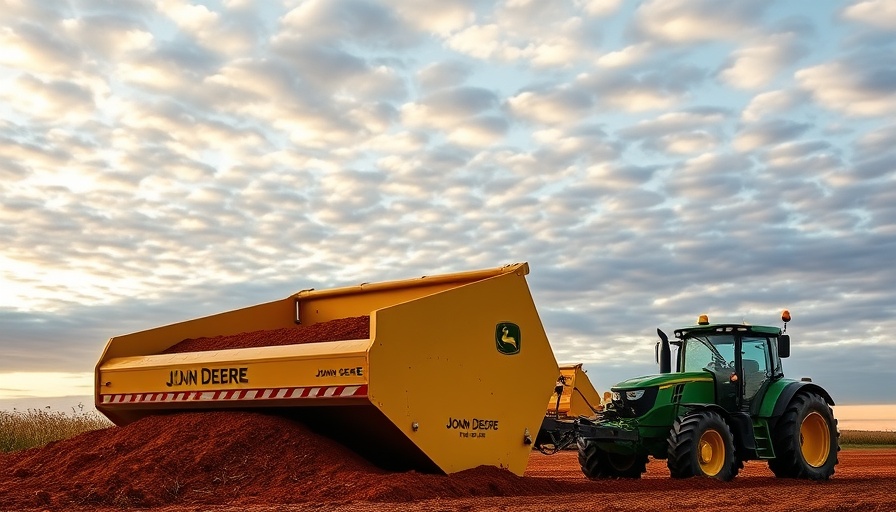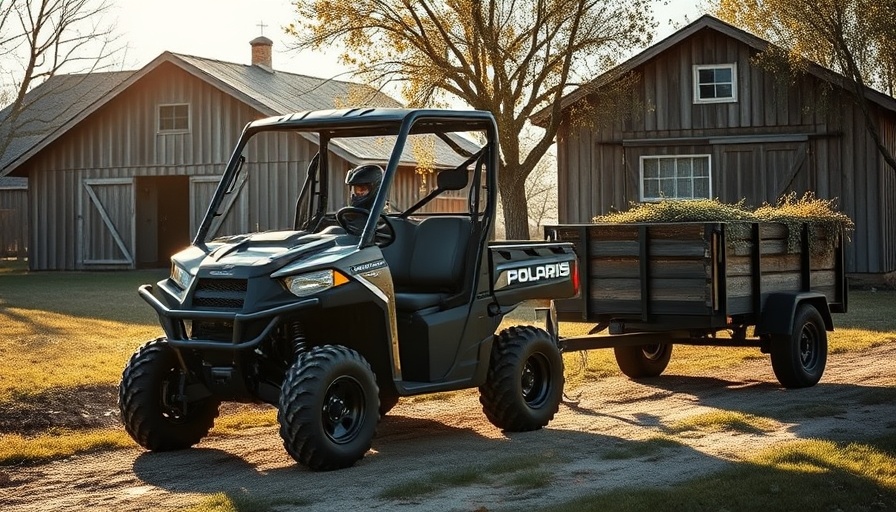
The Rise of Pull-Type Scrapers: Transforming Dirt Moving
When it comes to moving massive amounts of dirt, pull-type scrapers may not get the limelight that dozers do, but they're challenging that trend. John Deere's newly announced 3012 and 3812 pull-type scrapers have made waves in the industry for their efficient design and substantial capacity. As construction and excavation projects grow in complexity and scale, understanding the advantages these machines offer is crucial for contractors and service providers.
Understanding John Deere's Innovations in Scrapers
The horsepower and versatility of the new John Deere scrapers reveal impressive engineering advances. With capacities ranging from 30 to 38 cubic yards and a broad 12-foot bowl width, these machines cater to a variety of earth-moving tasks. The 3812 model is noteworthy for being the largest direct-hitch scraper in Deere’s arsenal, demonstrating the company's commitment to providing robust solutions for contractors.
The Advantages of Pull-Type Over Self-Propelled Scrapers
The conversation around self-propelled versus pull-type scrapers is not new, but Matt Costello, product marketing manager at Deere, sheds light on why pull-behind units are gaining traction. In certain conditions and terrains, particularly where smaller footprints or more versatile attachments are needed, pull-type models often outperform their self-propelled counterparts.
Costello emphasizes that while self-propelled scrapers are prevalent, recent trends show a significant shift as more contractors opt for the efficiency and cost-effectiveness of pull-type models, which can be easily hitched to powerful tractors.
Choosing the Right Carrier for Pull-Type Scrapers
It's vital to know what tractors or articulated dump trucks (ADTs) can effectively pull these scrapers. The compatibility of the scraper with the carrier machine significantly impacts its performance, particularly in different soil types. For contractors, understanding which components work best together is crucial for maximizing productivity on job sites.
As highlighted in the discussion, any high-horsepower tractor in the Deere lineup can pull the 3012 and 3812 scrapers, providing operators with flexibility when planning projects.
Best Applications and Soil Types for Scrapers
Knowing when and where to use pull-type scrapers is essential for contractors looking for strategic advantages in their operations. Matt Costello outlines the optimal soil conditions for efficient scraping, detailing how certain formulations apply better than others. Whether it be soft clay or gravelly terrains, the choice of using pull-type scrapers can drastically shape project timelines and costs.
The Future of Dirt Moving: Trends to Watch
As technology and industry practices evolve, it’s worthwhile to consider how the market will adapt to growing demands. The integration of advanced machine controls and monitoring systems in scrapers is becoming increasingly sophisticated. It’s this fine-tuning of equipment that promises greater efficiency, reducing operating costs while enhancing productivity.
Contractors who stay updated on these trends will likely reap the rewards of the growing emphasis on efficiency and technology in construction practices.
Conclusion: Embrace the Change for Better Efficiency
In conclusion, John Deere’s addition of the 3012 and 3812 pull-type scrapers signals a pivotal moment for the dirt-moving industry. The increasing efficiency, coupled with advanced technology, aligns with the growing demands of contractors. For those involved in home service contracting or excavation, understanding these developments can offer a competitive edge in a rapidly changing market.
As discussions around these innovations continue, it’s essential for contractors and service providers to educate themselves on optimal equipment usage and industry trends. This knowledge empowers them to make informed decisions and capitalize on new growth opportunities. Stay tuned to trusted sources for ongoing updates about equipment innovations and best practices in earthmoving.
 Add Row
Add Row  Add
Add 




Write A Comment